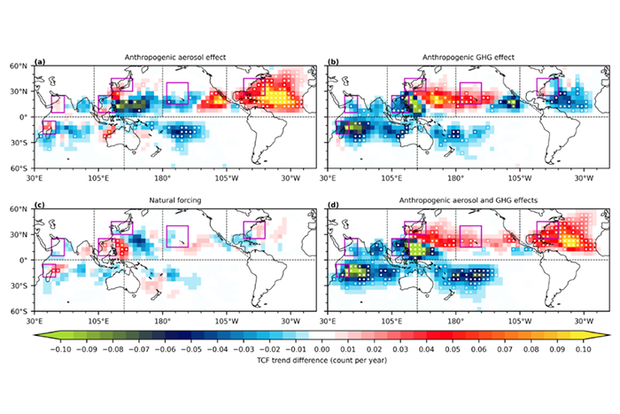Anthropogenic forcing changes coastal tropical cyclone frequency

Differences in simulated ensemble-mean TCF trends for 1980-2020. Credit: doi:10.1038/s41612-023-00516-x

Differences in simulated ensemble-mean TCF trends for 1980-2020. Credit: doi:10.1038/s41612-023-00516-x
Anthropogenic activities have been affecting our climate since the industrial revolution. The effect of anthropogenic climate change on tropical cyclones (TCs) is of particular concern because of their catastrophic damage at landfall and their relatively frequent occurrence compared to other natural hazards. However, attributing a regionally observed change in tropical cyclone frequency (TCF) to anthropogenic climate change is notoriously challenging for two main reasons. First, climate internal variability can considerably modulate regional TC activities. Second, reliable TC observations are only available since the satellite era, and therefore, not long enough to separate the potential effect of anthropogenic climate change from climate internal variability.
Using GFDL’s SPEAR climate model, the authors produced large-ensemble simulations to show that the observed increases in TCF since 1980 near the U.S. Atlantic coast and Hawaii are likely related to aerosol and greenhouse gas (GHG) effects, respectively. The observed increases near Japan and Korea during this period are attributed to the combined effects of aerosols and GHGs. The observed decrease in the South China Sea after 1980 was associated with GHG emissions alone. These changes in coastal TC frequency are explained by the responses of large-scale environmental conditions to anthropogenic forcing.